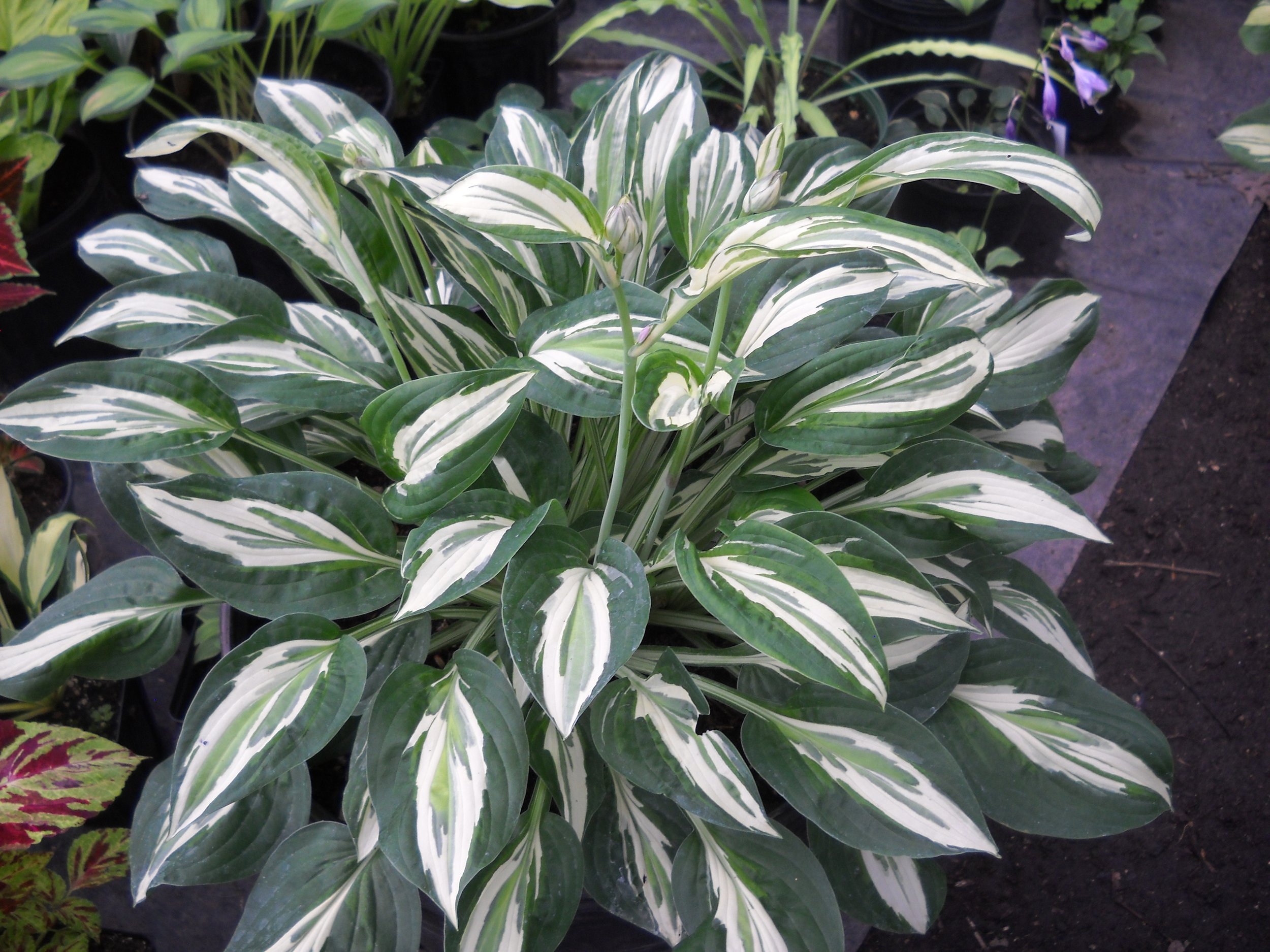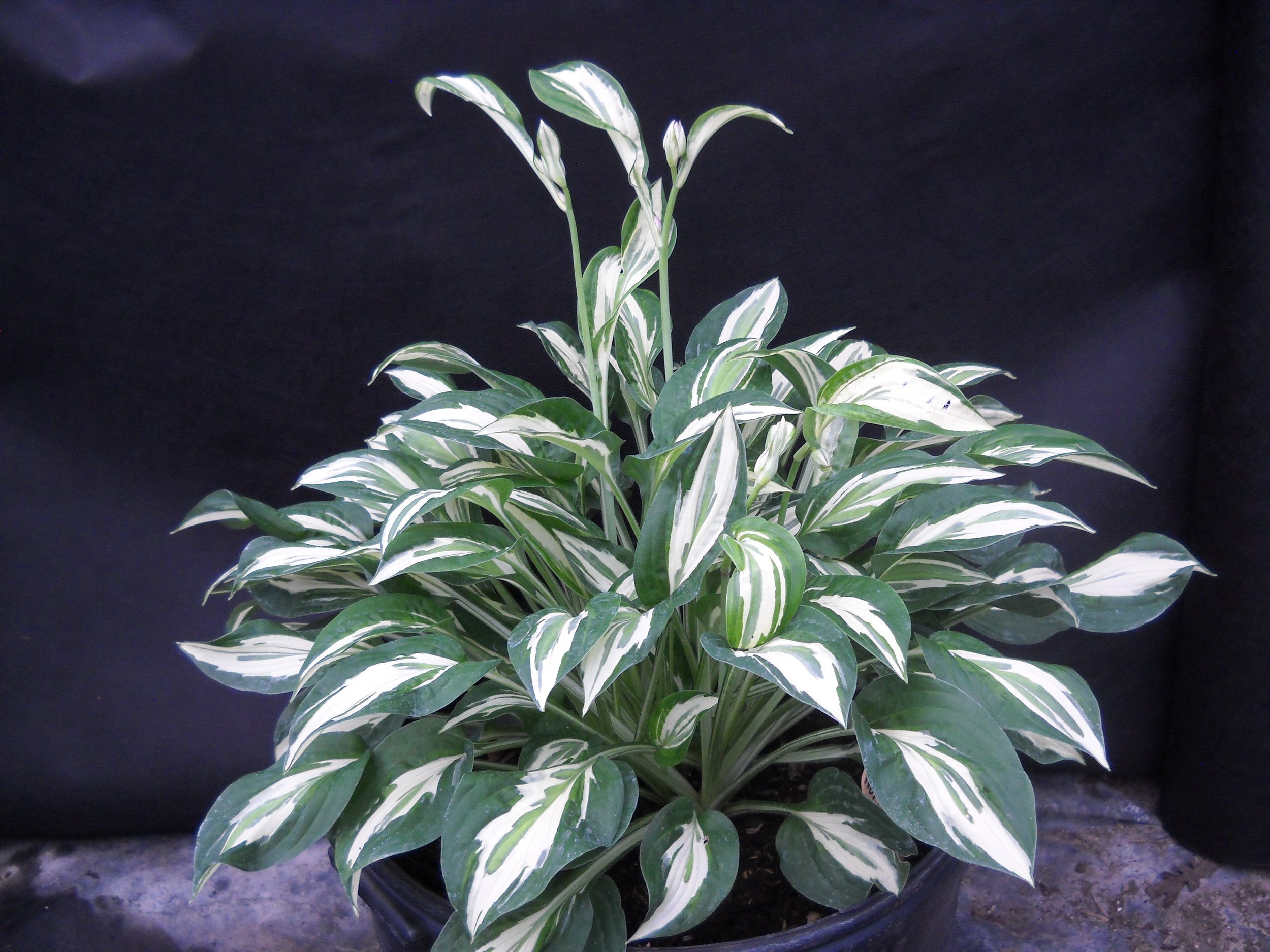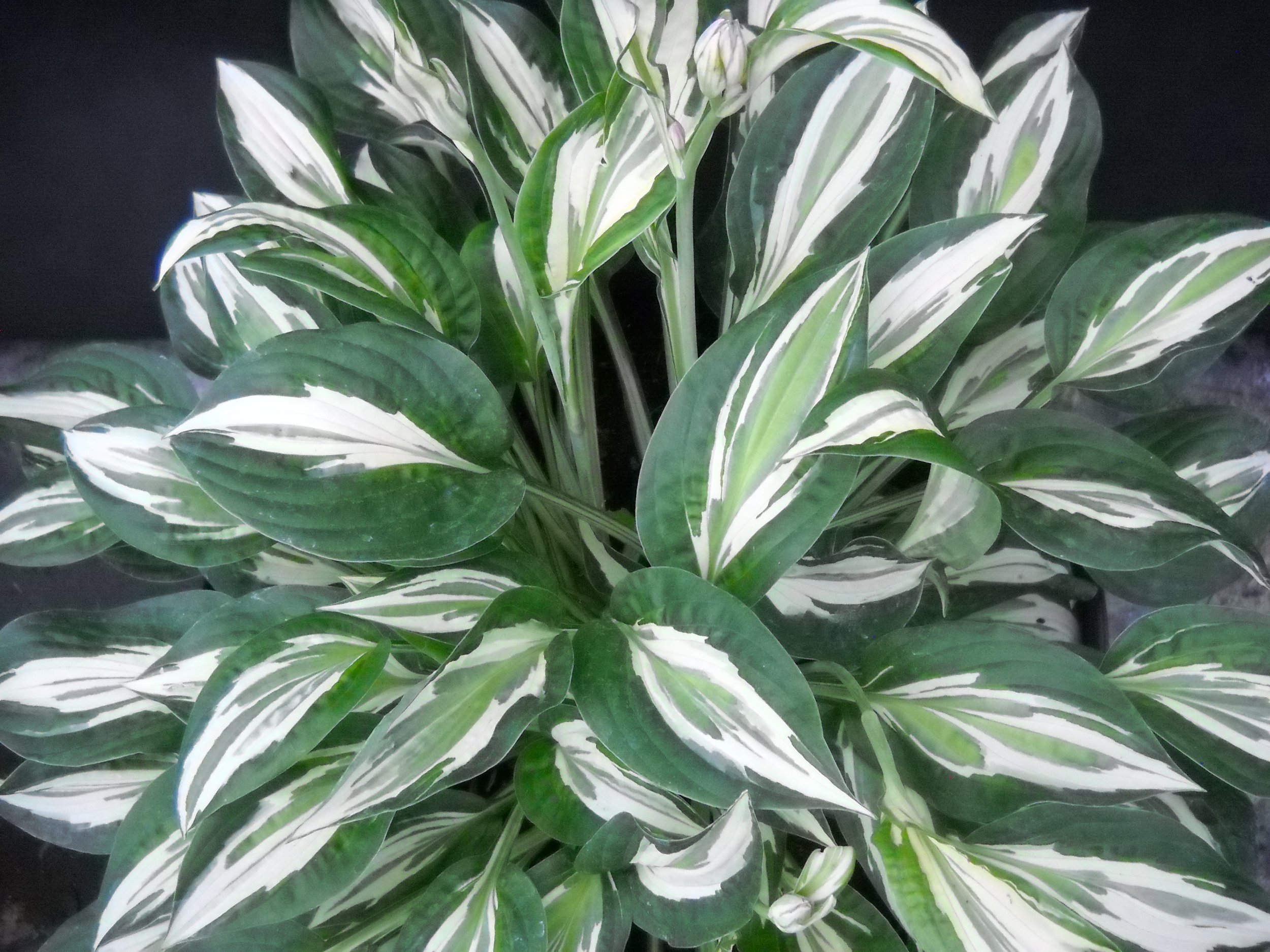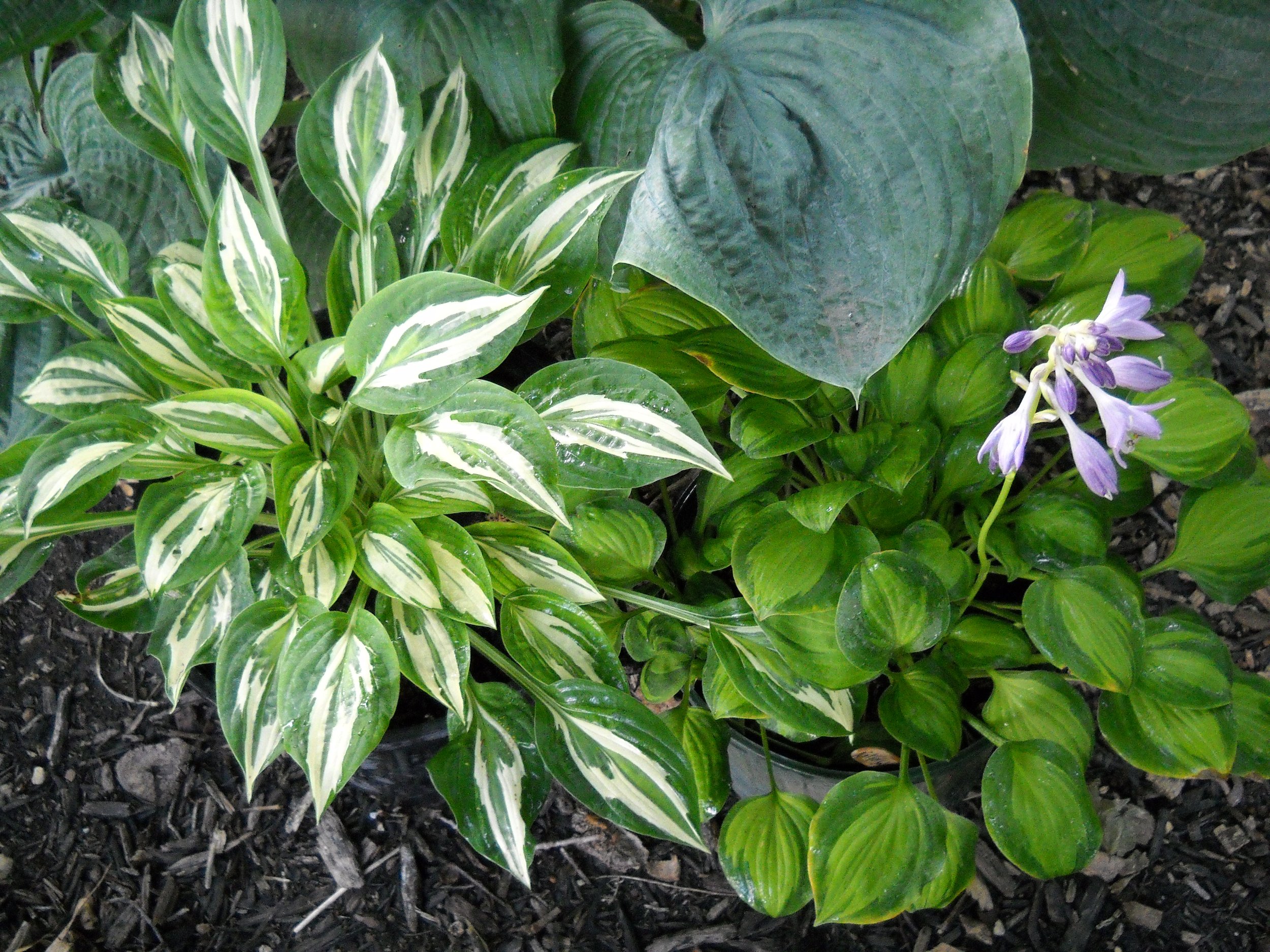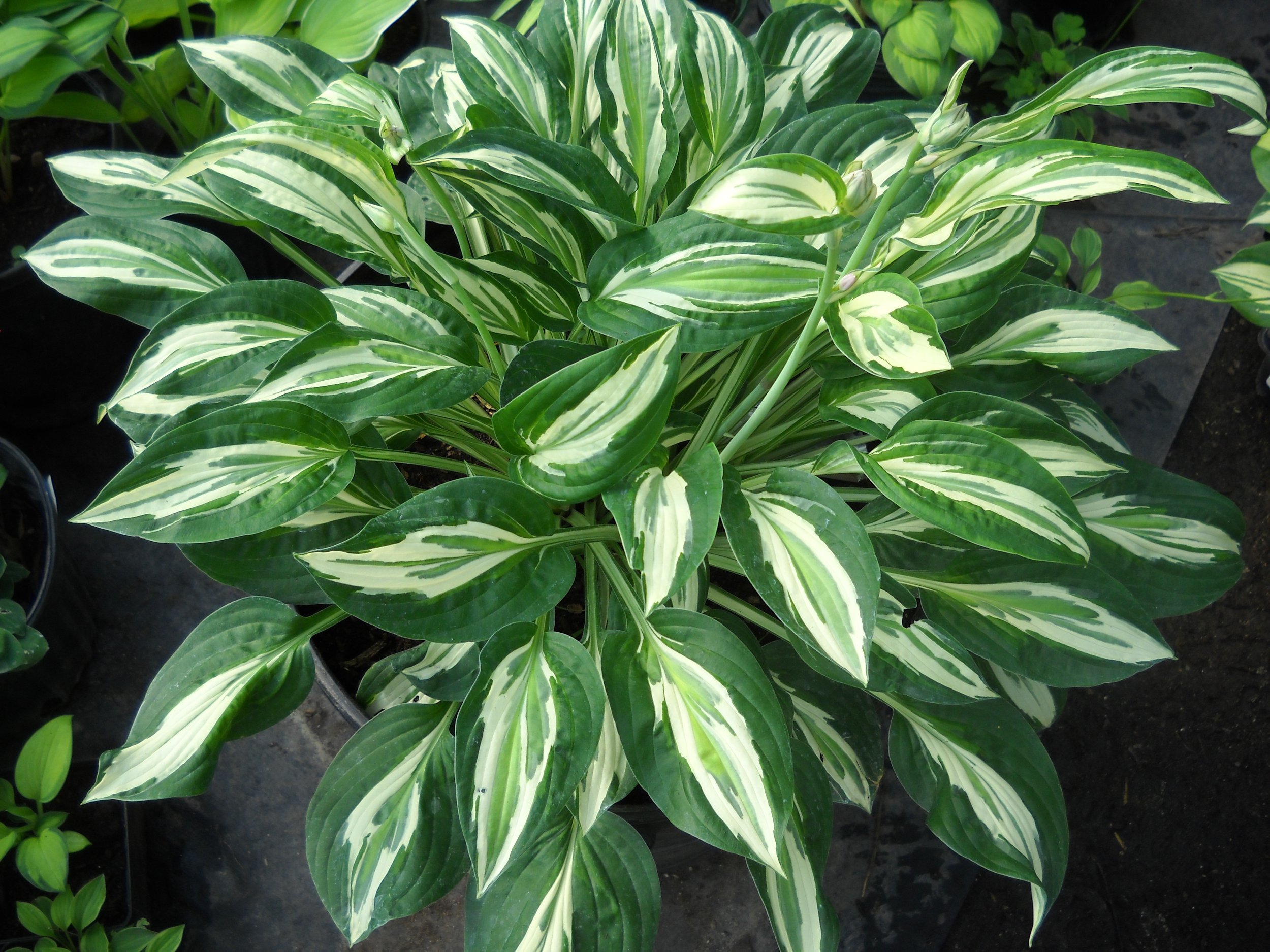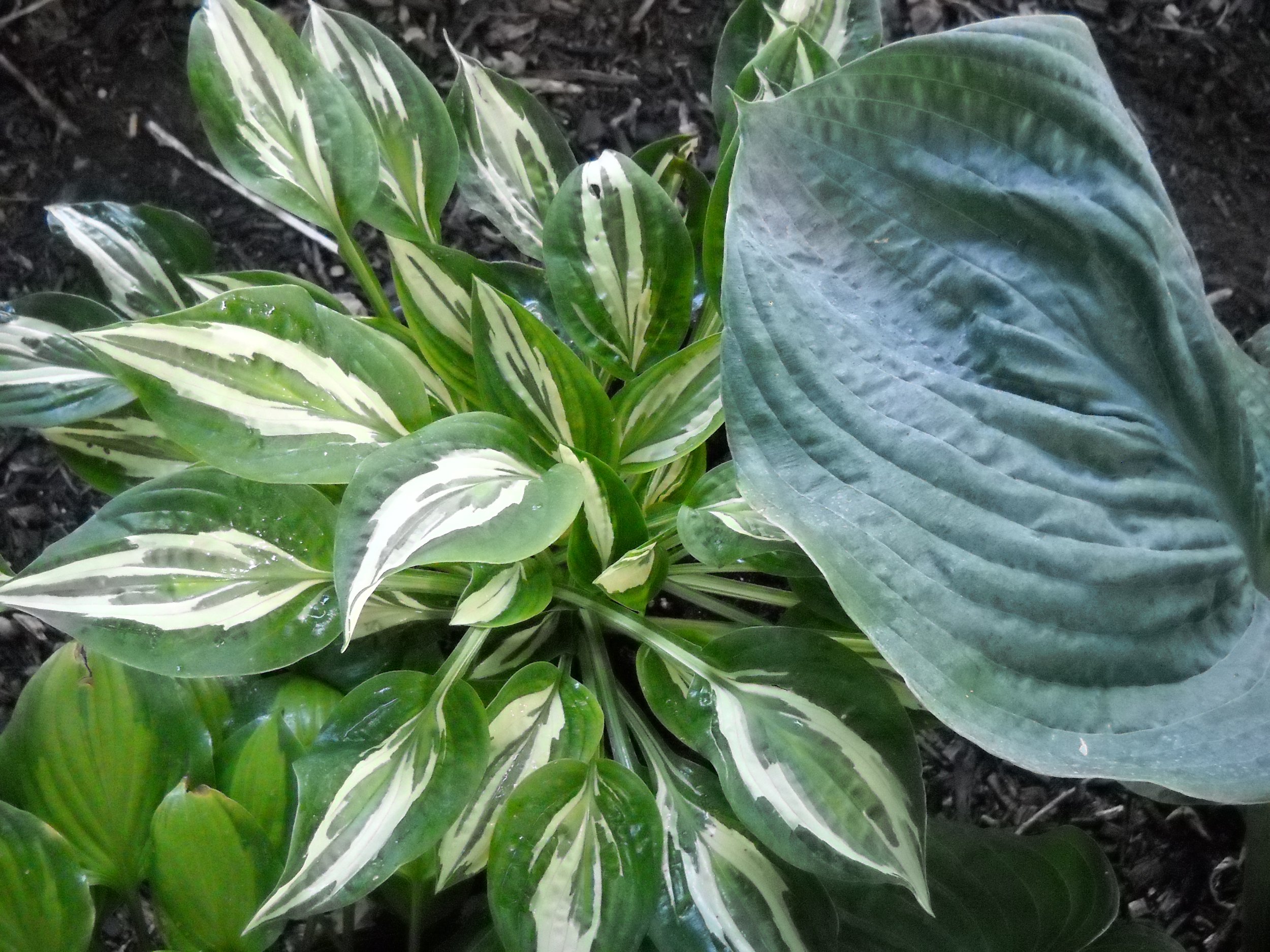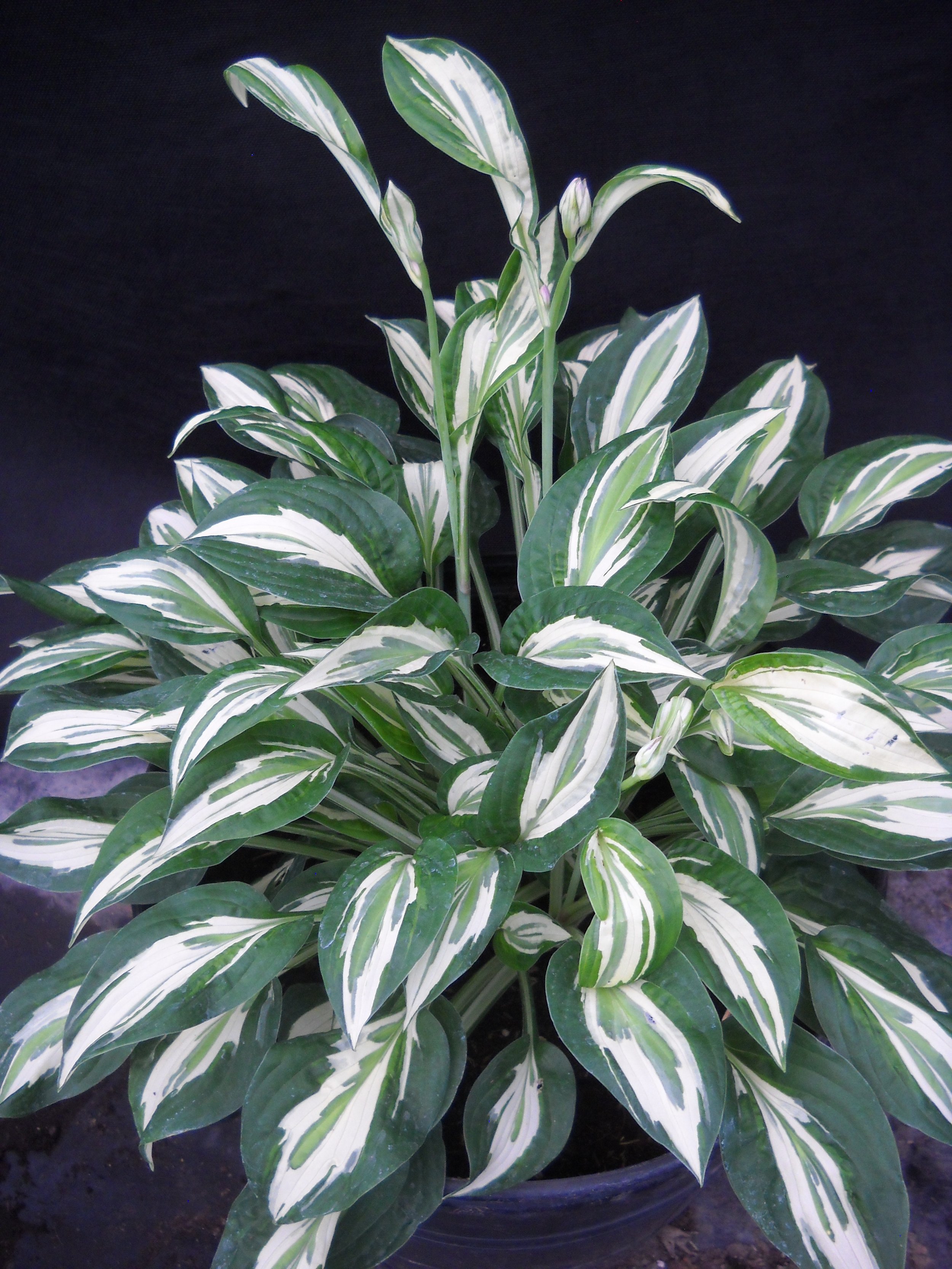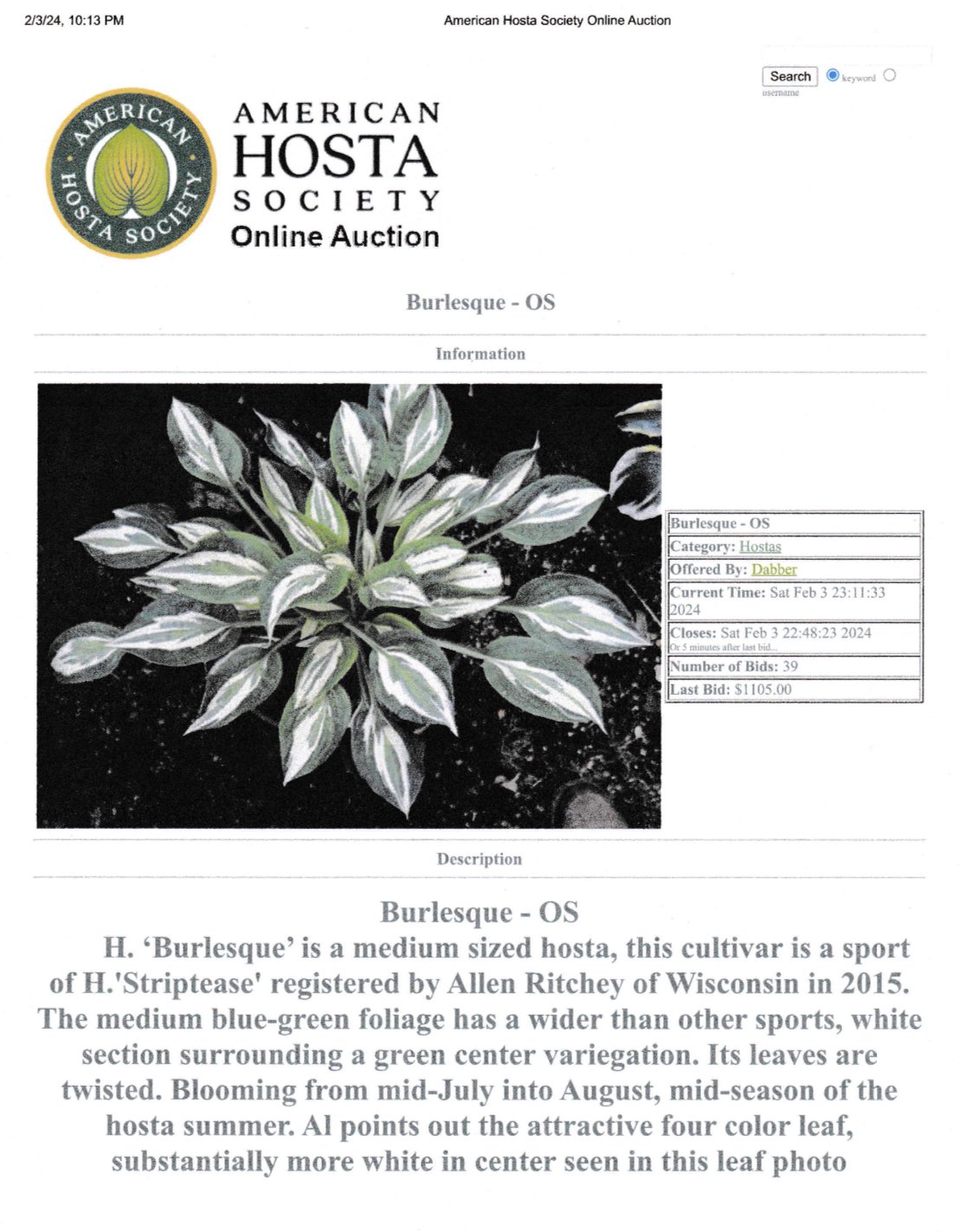Nature’s Showstopper
The story of Burlesque, a rare gem in the world of hostas
So the story begins. I have always loved the outdoors; just being in nature has a calming effect on me. Alot is happening all around us all the time, if only we took the time to pay attention. Things can begin to happen. When a person is interested in something that could include nature, sometimes it might lead to the strangest things or discoveries.
About 33 years ago, I fell in love — with my wife, Jill, and also with the perennial plant, hosta. The chain of events that ensued over the next three decades could not really be predicted. A wedding occurred and an arboretum was born, along with four children: twins, Maxwell and Tessa, then Samuel, followed by Nell.
As I started juggling two businesses, an auto body shop and arboretum, along with helping Jill with the twins, the days began to run together. As the months and years slipped by, the children and the arboretum grew. In addition, the interest in the perennial, hosta, also gained traction in the plant world. Soon two more births occurred: the infamous Hosta Fest event and our second son, Sam!
A Chance Encounter
To grow and or raise something, whether a family or a plant, can be done in many ways. The outcome can be unpredictable, as well as challenging. One unique occurrence in the ever-evolving arboretum was the discovery of a new hosta plant that appeared one day while I was dividing a plant called Striptease, a highly recognized and well-known Hosta of the Year winner. This presumed new plantlet was the smallest sprout I had ever bothered to nurture. My first reaction was to toss this thumb-sized anomaly over my shoulder in the direction of the compost pile. As you may or may not know, not every new seedling, mutation or sport turns out to be stable, consistent, durable, interesting or even unique. It just may not be worthy to hold a name in the genus of plants called hosta.
The decision to save this different, new plantlet was pure chance, because the day it was discovered I had only been potting gallon-size divisions. My random search for a smaller container, which was found at arm’s length, was the only reason this plant survived. The new, small home for this untested discovery was accomplished, but it definitely was not done on purpose. My focus went back to potting and transferring plants to a designated irrigation area. I did not make a note or mark this new hosta, it just disappeared into the abyss of potted plants. If the little plant did not sell during the warmer months, it would be destined to be tucked away to sleep through our sometimes inconsistent winter here in Wisconsin.
The next spring arrived and the year's planting and potting routine began once again. Our efforts to organize the many different varieties of hostas by using the Dewey Decimal System (yeah, right!) didn’t quite pan out, but a rediscovery of the random, unmarked plantlet showed its interesting face. Now this little guy had my attention, not only was it substantially larger, the leaf pattern was becoming more distinct and in my view something I had not witnessed before. Whatever … I had to get back to work in the auto body shop and arboretum.
Our arboretum chores and routine, as described above, continued and now our third spring had arrived since our initial plantlet discovery. WAIT!, WHAT!, WHOA!, this little guy is definitely fully into its leap year: rhyme, sleep, creep, then leap, showing off in its third year.
Now leaping forward to the fourth year I decided to divide the plant and begin planning a potential future, while evaluating its new habits and performance along the way. Keep in mind, the plant at this point was still living in a nursery pot and not in the ground.
So, now we had a plant to pay attention to. A name needed to be chosen that not only identified this offspring but was respectful to his mother. I decided to name it Burlesque. Why you might ask? For the following reasons: its mother’s name is Striptease, it has a patented sister, Hanky Panky, an uncle, Full Monty, and a cousin, Gypsy Rose. There are many others in the family, String Bikini, also Yellow Polka Dot Bikini. To keep the theme going, I thought registering the name Burlesque would be funny, maybe memorable, but definitely fitting in my opinion. Burlesque puts on a better “show” than the rest of the family!
Burlesque’s Attributes
Listed below are the attributes of Burlesque to substantiate my claim of a better show, not only in general plant existence but in comparison to the rest of the family.
(1) Interesting leaf pattern. At full glory of the season the showing of four colors: outer band medium to dark green; next bright white band with substantial width; followed by lighter chartreuse center with a blueish, gray line striking in the middle.
(2) The actual plant size falls into the medium category, which fits better in all size gardens and achieves its maturity quickly.
(3) In the spring when all hostas begin to emerge, Burlesque sleeps in. (Similar to our college students!) It Is not an early riser or first to emerge like Liberty or Montana Aureomarginata, which inevitably get zapped with an early frost and take weeks to recover and look good again.
(4) The growth rate is quite robust and increases into new divisions rather quickly, and has what we call good substance. It’s maybe not first on the slugs’ list to eat.
(5) Root structure is fine and fibrous, making it good at taking up water for good growth, along with a good choice for soil erosion support.
(6) Seasonally, this little wonder emerges showing great contrasting variegation right away. Late spring to early summer the show continues. Where others fade, Burlesque just keeps putting on a more vibrant display. The bloom begins on scapes that not only hold the light lavender flower, but also on multiple variegated leaves on the stem. This trait is uncommon and adds to the uniqueness of this up-and-coming king of the shade gardens. This medium-size hosta starts out and finishes with a great show!
A Survivor’s Tale
The original discovery of this plant almost did not happen, nor did my decision to save and pot it. The first year or two, no specific attention or development and or supervision occurred. In the third year, the plant was potted in a bigger pot and interest began to grow. Burlesque was coming into its own, with lots of unsolicited attention when people saw it in the greenhouse. In addition, we received numerous inquiries about whether it was for sale.
One day in late spring of that third year when I was out (probably on the golf course), visitors stopped by to view the arboretum. Our son, Sam, assisted them when they were ready to pay for a hosta they picked out. He realized the plant they chose was Burlesque, and he had to tell them I probably did not want to sell it, explaining it was the only one I had. Whew! That was close!
In the fourth year, after dividing the new plant into three-four potted divisions, Wisconsin witnessed what plantsmen would call the perennial killer year. Plant dormancy was delayed in the fall and the dormancy break came in the middle of the winter. This phenomenon expends stored energy and as plants refreeze, they emerge in the spring on depleted energy reserves. This situation occurs differently depending on the consistency of our winter weather.
The result of this anomaly would prove to be a pivotal time for the arboretum. I had 3,000-4,000 potted plants stored outside — the most overwintering I had ever done to this point — a risky decision, but if successful would help us get a jump on sellable inventory in the spring. My newly divided discovery, Burlesque, was stowed along with the rest of the sleeping plants. When spring arrived after this strange winter, and my seasonally ambitious “spring fever” was in full swing, I was anxious to check how the hostas fared. To my dismay, it seemed as though every other plant I checked, by tipping it out of its pot, appeared dead. In a normal year, my overwintering success rate would be 90-98%. After all was said and done, I had taken a devastating hit: 50% of the plants were completely dead and another 20% were half dead — all unsellable.
Among the dead, overwintered plants were the only four potted Burlesque plants on the planet. I started to have a bad feeling in my stomach. Are my divisions of Burlesque still alive or have they succumbed to Mother Nature's cruel winter? The days of spring kept coming and so did our time to officially uncover our covered plants that we tried to protect through their dormancy. From experience, April 15 seemed to be the magic date to begin uncovering them or to at least start monitoring their dormancy break and growing progress. I really had a hard time with this process this particular year. Of course dumping out one dead plant after another is no fun. Instead, I delegated this task to my arboretum volunteers to help ease the pain.
Well as you might guess, eventually the four potted Burlesque plants were uncovered. Although located in the same spot where others had perished, Burlesque was found to be alive and kicking — not happy, but alive! The year continued as we coddled the struggling plants and dug and potted more to make up for the shortfall for our annual Hosta Fest sale. By the end of the season, Burlesque had perked up and was ready for the next stage of propagation.
Year five started out better and Burlesque had proven itself not only in hardiness but in overall looks and performance.The plant also bloomed for the first time, so we finally witnessed the flower's color and size. It was time to look for assistance in developing this proven plant.
The first step was putting it through tissue culturing techniques, which is a process of micropropagation done in controlled conditions, producing very small platelets from thin slices of the mother plant's crown. When I divide a plant, I make three-eight divisions, but in a lab environment, hundreds are created at a time. This system speeds up the potential availability of the plant for sale.
To help with this process, I turned to a well-known hosta expert and author of many hosta guides, Mark Zilis, owner of Q & Z Nursery in Rochelle, Illinois. I called and arranged to meet with Mark at his facility, so he could begin tissue culture production of Burlesque, using one of the four plants I had. After a few months, I checked in with the hopeful progress of Burlesque, however, the news was bad and sad, Q & Z Nursery was going out of business. Burlesque never made it into production and was lost? Luckily, I still had three mature plants I could use to propagate the old-fashioned way, by crown division, which is painfully slow. Using this method, each planted division needs to grow two-three years before dividing again, and then you might have 15-20 to replant. Using those plants you repeat the process. Again, painfully slow!
Another couple years passed and Burlesque was growing in the ground well. Now it was once again time to speed up the process of propagation. I decided to register Burlesque with the American Hosta Society and make it officially my plant, including its given name. Finding a new person to tissue culture Burlesque was the next step. A gentleman by the name of Rob with Made in the Shade, a hosta propagation business, in Kansas City, Kansas, was my next try. My daughter, Tessa, and I drove to Kansas and delivered a large division of Burlesque to be put into production. At the same time, I reached out to Mark Zilis, who briefly attempted to micropropagate our plant a couple years earlier. I wanted to check in to see how he was doing, and also to see if he wanted another shot at reproducing Burlesque and redeeming himself. Mark agreed.
A year or two passed and I checked back in with my two plant propagators. To my dismay, neither of them had success, but they were willing to keep trying. It appears this family of hostas does not like the tissue culture process, preventing the mother plant from producing the four-color Burlesque beauty by this process’
More time passed and I realized I’m not going to get any help propagating Burlesque. So I went into full replanting mode, preparing what I felt was the right location and optimal soil conditions to get as many plants growing as possible. The lack of success by the two gentlemen who attempted tissue culturing in no way shows deficiency of knowledge in their area of expertise. Rather, it demonstrates just how rare this plant really is. Is it sad that I cannot grow enough plants fast enough to meet the demand? Or does this tissue culture failure indirectly make Burlesque more appealing to people who want a truly rare, collectible plant with unusual presence? The fact is Burlesque is an extraordinarily rare hosta that is not mass produced and sold at Walmart!
I have struggled with being a small business owner, not only in the auto body industry but in my nursery gig as well. Having the disposable capital to risk and really bust out, to do what my mind has already done, and be competitive but yet profitable, is usually the demise of most small entrepreneurs’ dreams. Ultimately, it is the fear of failure, personally, emotionally, and most importantly, with a wife and family in the wings, financially!
First of all, thanks for reading and taking the time to even give our little effort consideration. My intentions are to carry on, solve each problem as they present themselves, and continue to be as original as I can in all I do. Each day is an opportunity to create, maybe invent, and hopefully discover.
Thanks again for stopping by if not only on the Internet, hopefully in person at our arboretum! Look us up at hostafest.net
Sincerely,
Allen Ritchey
Owner Operator, Weeder, Waterer, Planter, Potter, Slug Slayer, Steward of Al’s Auto Body & Arboretum
In the words spoken by admired radio newsman and commentator, Paul Harvey, as he concluded each broadcast, “And now you know the rest of the story.”
